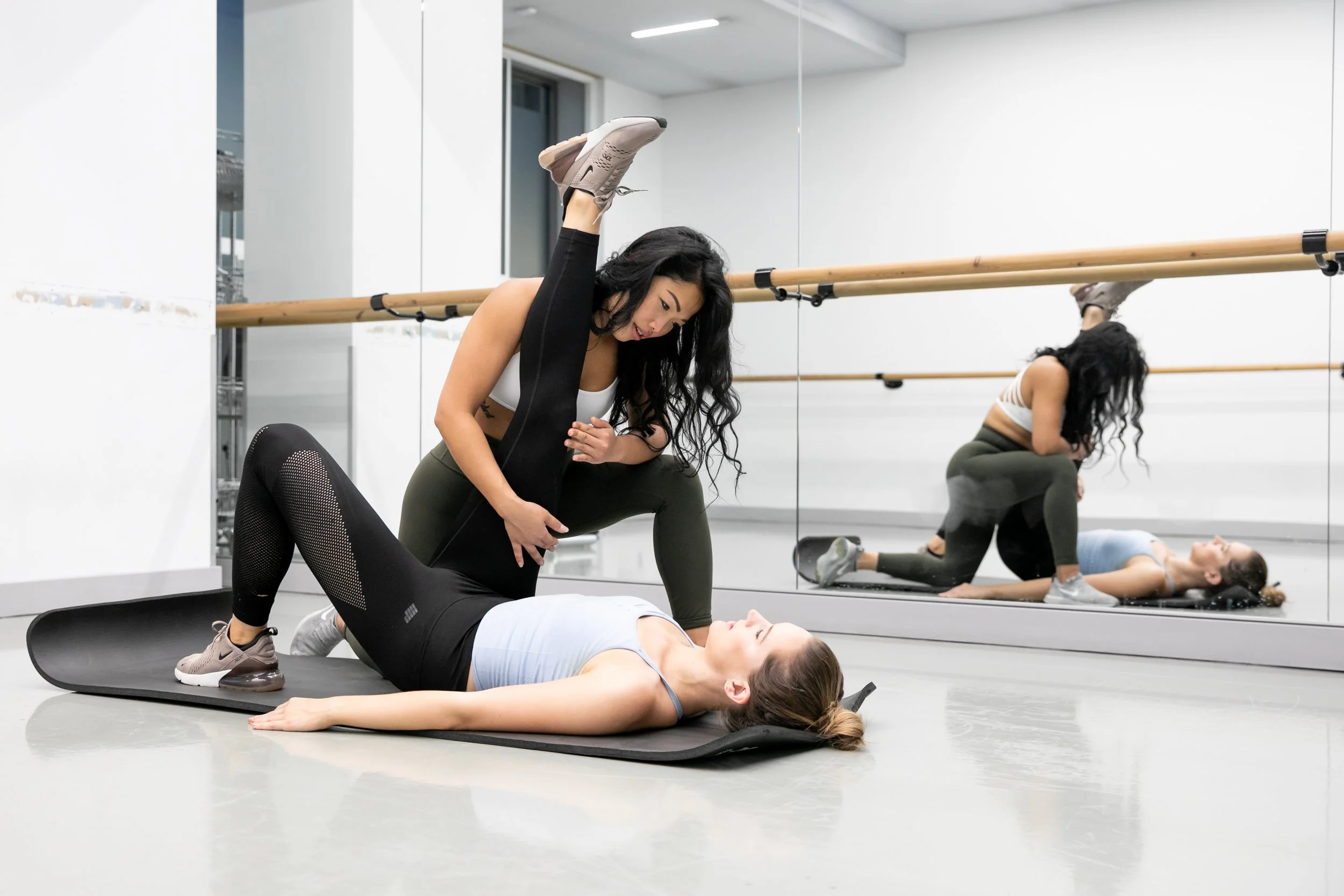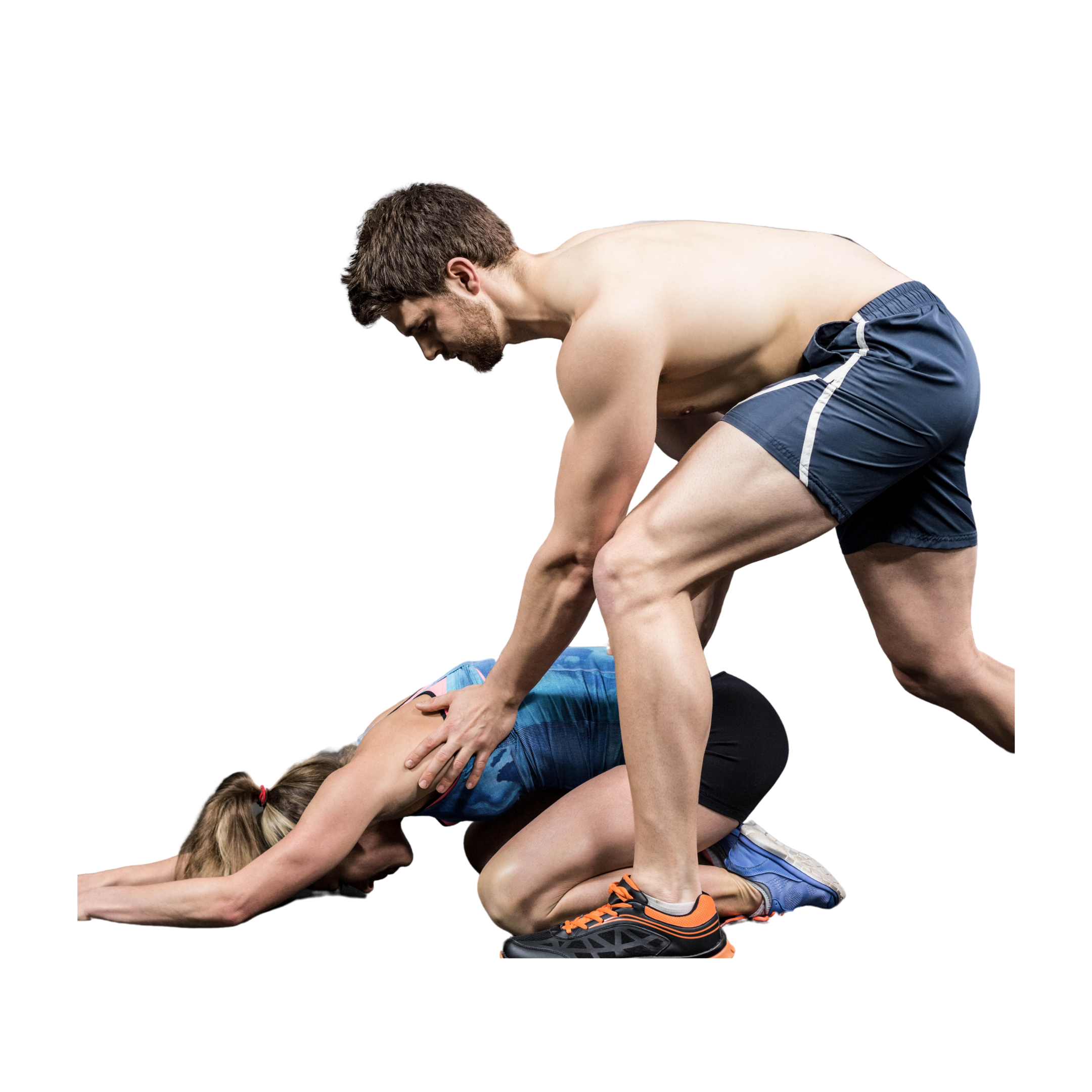
Assisted Stretching
I can help you improve your flexibility and range of motion faster and more efficiently than you could achieve alone. In an Assisted Stretching I will draw upon the most effective stretching and fascia release techniques to achieve better flexibility and quality of movement fast.
The Differences
Effective regular stretching is just as important as regular exercise, and is an essential part of any sustainable health and fitness programme. Stretching keeps muscles strong, supple and healthy - giving you the flexibility and range of motion to support the activity of your joints and muscles without risk of pain or injury. If flexibility and range of motion is limited - all too often the case in our sedentary, deskbound lifestyles - we not only risk damage, but are prevented from being able to move our bodies to the best of their ability.
However, not all forms of stretching are made equal. Stretching is all too often done incorrectly, becoming counterproductive and even causing injury. There is also no such thing as a one-size fits all stretching programme, technique or routine. Different methods suit different goals, conditions, and bodies. We will use the most effective types of stretching, such as PNF (Proprioceptive Neuromuscular Facilitation), that address your body’s unique needs - freeing you from any stiffness and pain that may be restricting your movement and preventing you from fully enjoying your physical and daily activities.
However, not all forms of stretching are made equal. Stretching is all too often done incorrectly, becoming counterproductive and even causing injury. There is also no such thing as a one-size fits all stretching programme, technique or routine. Different methods suit different goals, conditions, and bodies. We will use the most effective types of stretching, such as PNF (Proprioceptive Neuromuscular Facilitation), that address your body’s unique needs - freeing you from any stiffness and pain that may be restricting your movement and preventing you from fully enjoying your physical and daily activities.
During a Massage Therapy session your therapist may incorporate any of the above assisted stretching techniques. Expect to be gently moved and held in a range of positions to help you further the stretch and encourage and tension in your muscles to release.
What to expect from assisted stretching session ?
The focus here is on practicing full, safe, normal movement to improve and increase your range of motion around many of the joints of the body. Expect steady and controlled positions and movements, carefully aligning the body to produce isolated stretches to specific muscles. Less intense than my standard Pilates classes, you will explore how it feels to stretch, allowing the body to absorb the feeling of being freer, and improving your flexibility and ultimately your posture as a result.
The benefit of Assisted Stretching
Enhancing Sports Performance
An effective, bespoke stretching programme is essential for a whole range of athletic and sporting activities, especially those requiring a wide range of motion such as Martial Arts, athletics, figure skating, skiing, yoga and dance. More flexibility means better performance through both an improved range of motion and also better functional efficiency in those ranges of motion, as a flexible joint requires less energy and is less likely to become injured.
Easing Stiffness, Aches and -Workout Pains
Stretching can help lessen the shortening and tightening effect that can often be the cause of stiffness and the aches that come with it. Integrating a regular, effective stretching programme can also help with that post-workout feeling too.
The Antidote To A Desk Job
21st century life is the perfect recipe for creating short, tight muscles. Sitting in a chair in front of a computer all day means tight chest muscles and shortened hamstrings - and plenty of uncomfortable stiffness. Most of us are time-poor, spending 35+ hours a week at our desks. So it’s even more important that we use not just the most effective but also the most time-efficient stretching techniques to undo the damage of our sedentary lifestyles.
FAQs for Assissted Stretching
-
A: Assisted stretching refers to a form of stretching where an external force, such as a partner, therapist, or stretching device, helps facilitate and enhance the stretching movements. It involves the application of gentle pressure, traction, or support to increase flexibility and range of motion.
-
A: Regular stretching is typically performed individually, using one's own muscles to apply tension and elongate the muscles. In assisted stretching, an external force is applied to aid in the stretch, allowing for a deeper and more controlled stretch that may not be achievable on your own.
-
A: Assisted stretching offers several benefits, including:
Increased flexibility and range of motion. Improved muscle relaxation and stress relief. Enhanced athletic performance and mobility. Decreased muscle soreness and risk of injury. Improved posture and body alignment. Promotion of blood circulation and nutrient delivery to muscles.
-
A: While some stretches can be done alone with the help of stretching aids or devices, many assisted stretching techniques require a partner or therapist to assist you. It is often more effective to have someone else apply the appropriate force or support during the stretches.
-
A: Like any physical activity, there are a few precautions to consider. If you have any specific medical conditions, injuries, or concerns, it is advisable to consult with a healthcare professional or a qualified stretching therapist before engaging in assisted stretching. They can provide guidance based on your individual needs and ensure that the stretches are safe and appropriate for you.




